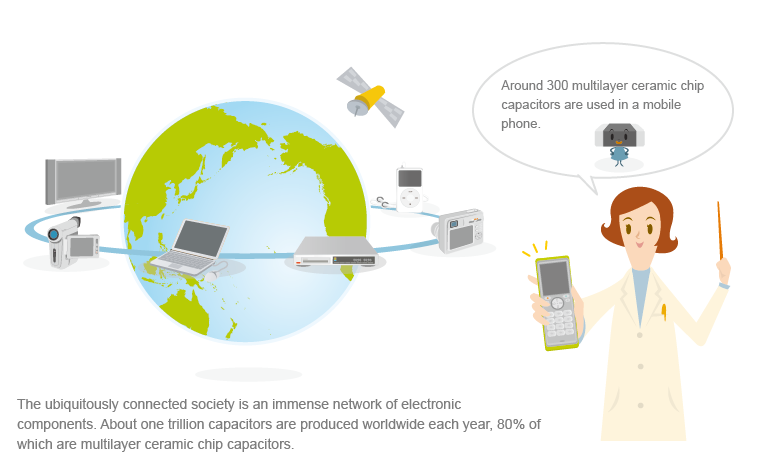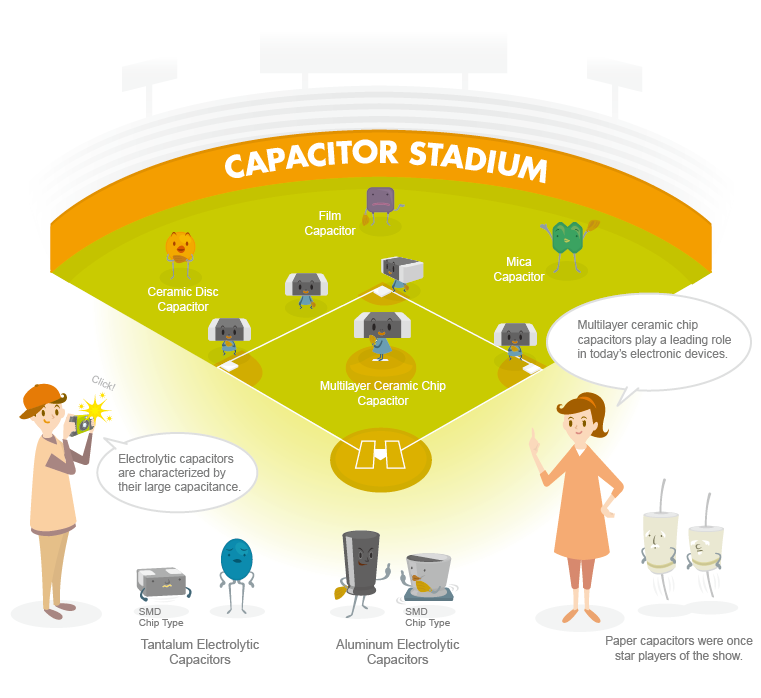The World of Power Electronics
Part 10: Power Supply Technologies for an Environmentally Friendly, Energy-Saving Society
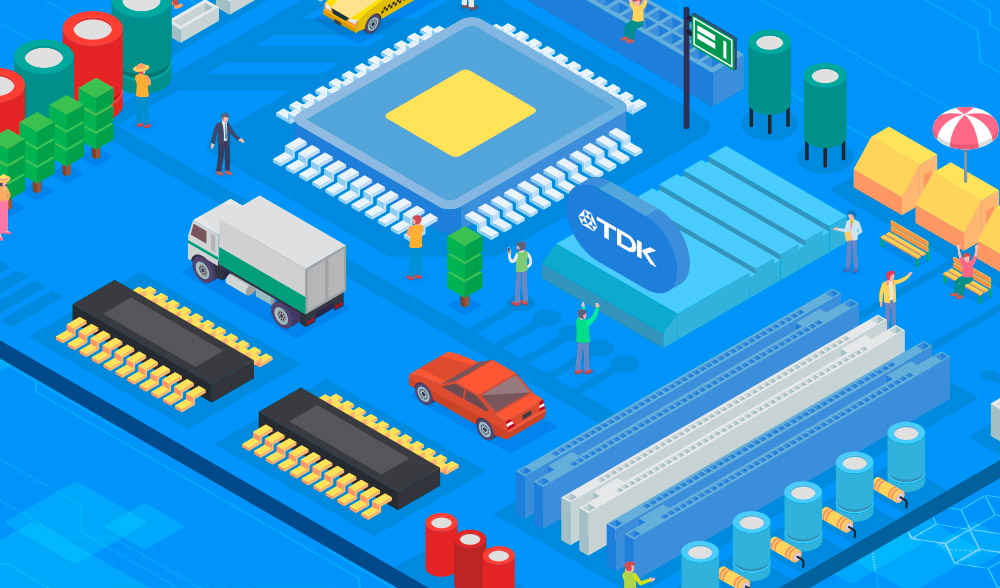
In an effort to reduce CO2 emissions and phase out petroleum, electric vehicles are being developed vigorously to replace gas-powered cars. Technologies for utilizing natural energy sources such as solar and wind power are keys to a future ecological society, and the United States and other advanced nations are actively promoting “Green New Deal”-type policies.
Onboard DC-DC converters that help HEVs save energy
There are three types of electric vehicles: pure EVs that run exclusively on rechargeable batteries (electric vehicles by the narrowest definition); HEVs (hybrids) that combine electrical motors and a gas engine; and fuel cell vehicles that draws electricity from a fuel cell (a type of electrochemical generator) to drive electrical motors. HEVs have been leading the clean-car development race—even plug-in HEVs that can be recharged at home have also been introduced. Pure EVs have relatively simple mechanisms, but their greatest drawback is the shortness of range, where the battery is the bottleneck. Fuel cell vehicles are not expected to be widely used as passenger cars for the foreseeable future due to technical challenges.
Nickel-metal hydride batteries have been the mainstay in electric vehicles, but lithium-ion batteries are expected to replace them in the future. Note that energy density is a key indicator of battery performance. The higher the energy density—the smaller and lighter the battery, the more batteries can be loaded, and the longer the range.
Lithium-ion batteries are superior to nickel-metal hydride batteries in energy density. They can also output higher voltages (3.5 to 4V), which is advantageous for EV and HEV motors since they require high voltages in the range of 200 to 300V to maximize efficiency. However, since lithium-ion batteries use flammable organic solvents in the electrolyte, ensuring safety is paramount. A lithium-ion polymer battery is a type in which the electrolyte is a gel-like polymer (a polymeric compound).
Cars today are equipped with a plethora of electrical devices—which is why they are sometimes referred to as “electronic appliances on wheels.” Many of these electrical devices operate at low voltages (e.g., 14V)—which is why, in HEVs, the main battery’s high voltage is stepped down to charge the auxiliary battery. DC-DC converters designed for HEVs handle this voltage conversion. As automobiles become more convenient, the power consumption of equipment like power windows, power seats and car navigation systems rise rapidly, placing a heavier burden on batteries. Therefore, further energy savings and reduction of battery load are critical matters for HEVs.
TDK’s DC-DC converters for HEVs offer high efficiency, low noise and high reliability, achieved through technologies such as heat dissipation design based on advanced thermal analysis simulations. One major cause of heat loss in DC-DC converters is the core loss of transformers. TDK has developed the PC95, a new ferrite material that maintains low loss characteristics across a wide temperature range of 25 to 120°C, which has led to a substantial reduction of core loss. This material is used in HEVs in Japan and around the world, and its performance has been highly regarded.
Lithium-ion batteries—which are compact, lightweight, long-life alternatives to the older lead-acid batteries—are also found in UPS (Uninterruptible Power Supply) systems today. As solar panels and wind power generators make their way into homes, they too will need batteries to store the energy generated. Because of the ability to achieve compact sizes even in large capacities, lithium-ion batteries are expected to play significant roles here as well.
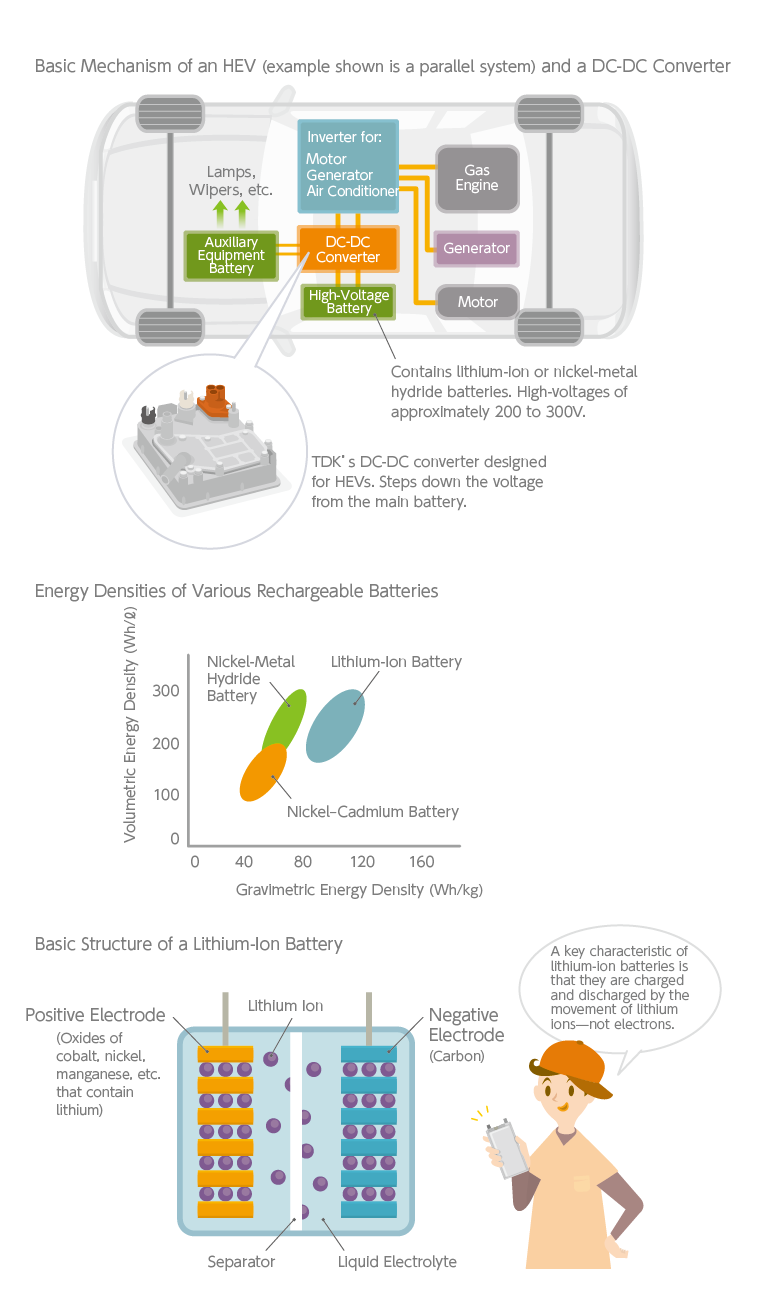
How PWM (Pulse Width Modulation) stabilizes voltage
Even though electronic devices do not emit CO2, they still generate heat due to various forms of power loss. Power supplies perpetually bear the missions of fighting heat generation and saving energy. It is estimated that IT-related power consumption will account for a quarter of Japan’s total power consumption by 2025, including the exhaust heat and power required to cool IT equipment. This is why digital control technology has been drawing close attention as a means to further improve the efficiency of power supplies. Replacing conventional analog control with digital control will save power, reduce heat generation, and reduce the power required for cooling. This is especially beneficial for large-capacity power supplies of several hundred watts or more, but is also expected to save battery power for mobile devices like mobile phones.
Before getting into digital control, let’s briefly touch upon today’s analog control system—using DC-DC converters as an example. DC-DC converters and other switching power supplies convert DC current into high-frequency pulses, which are subsequently sent to a transformer for voltage conversion. The pulse width determines the voltage outputted, hence the term PWM (pulse width modulation). However, the output voltage—which should be kept constant—can become unstable due to fluctuations in the load on the output side. To solve this problem, the fluctuations are monitored and fed back to make the appropriate corrections. This is how a stabilizer circuit works.
As shown in the figure below, the output voltage is first detected and compared to a reference voltage, and the error is amplified and sent to the analog controller. The analog controller takes a constant-frequency triangular wave generated by an oscillator and sends it to the switching circuit with a pulse width that corresponds to the signal voltage coming from the error amplifier. This feedback enables the stabilization of the DC output voltage. However, with analog methods, the ability to fine-tune the voltage is limited—which is why digital control has emerged as a new trend in power supply technologies.
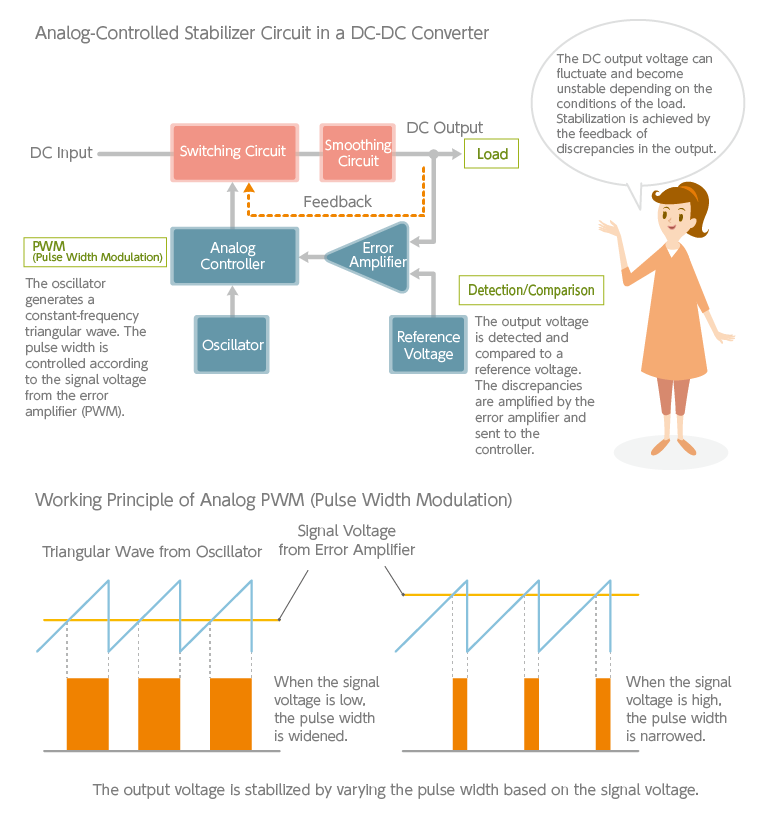
The evolution of power supplies through digital control has already begun
Digital control of power supplies can mean two different things: the digital control of communication functions, or the replacement of analog control with digital control in PWM (pulse width modulation) circuits. Circuits that incorporate both are referred to as having full digital control.
Digital control of communication functions is a technology that sends signals from a PC through a digital interface to control the power supply in response to changes in voltage, current, temperature, etc., as shown in the figure below. Digital control of the feedback system replaces the analog control by detection/comparator and control circuits with A/D converters and DSPs (digital signal processors).
Digital control is not a new technology—Densei-Lambda (now TDK-Lambda) has been using it in UPS (Uninterruptible Power Supply) systems since the 1980s. A UPS system instantaneously switches from commercial AC to battery power when a power outage occurs, preventing electrically powered equipment from going down. By monitoring the operational status of batteries online and digitalizing the control process of reverting to commercial AC, speedy and fine-tuned control becomes possible.
In 2005—in collaboration with the University of Electro-Communications—Densei-Lambda developed a switching power supply technology featuring full digital control using DSP, and produced a prototype isolated DC-DC converter in quarter-brick size. It was named “Intelligent Power Supply.” Peripheral technologies and applications are now under development with an eye toward commercialization. TDK also demonstrated an inverter that digitally controls the backlight of a flat panel display at CEATEC 2005, which drew considerable attention.
Energy conservation is a momentous issue in modern society, and digital control is about to grow exponentially as a key supporting technology. The difference between analog and digital control of power supplies is analogous to the difference between analog and digital TV broadcasting. Even if the core programming remains the same, extended features like data broadcasting, interactive programs in which viewers can participate, and 1seg broadcasting are only possible in digital broadcasting. Similarly, digital control of power supplies not only saves energy through higher efficiency, but enables many other possibilities that only digital technology can offer.
As our electronic society progresses further, the role of power electronics continues to rise as we move toward an environmentally friendlier, energy-saving society. We encourage you to keep an eye on future developments at TDK and on TDK-Lambda’s power supply technologies.
Note: This article concludes The World of Power Electronics series. We would like to take this opportunity to thank the readership.
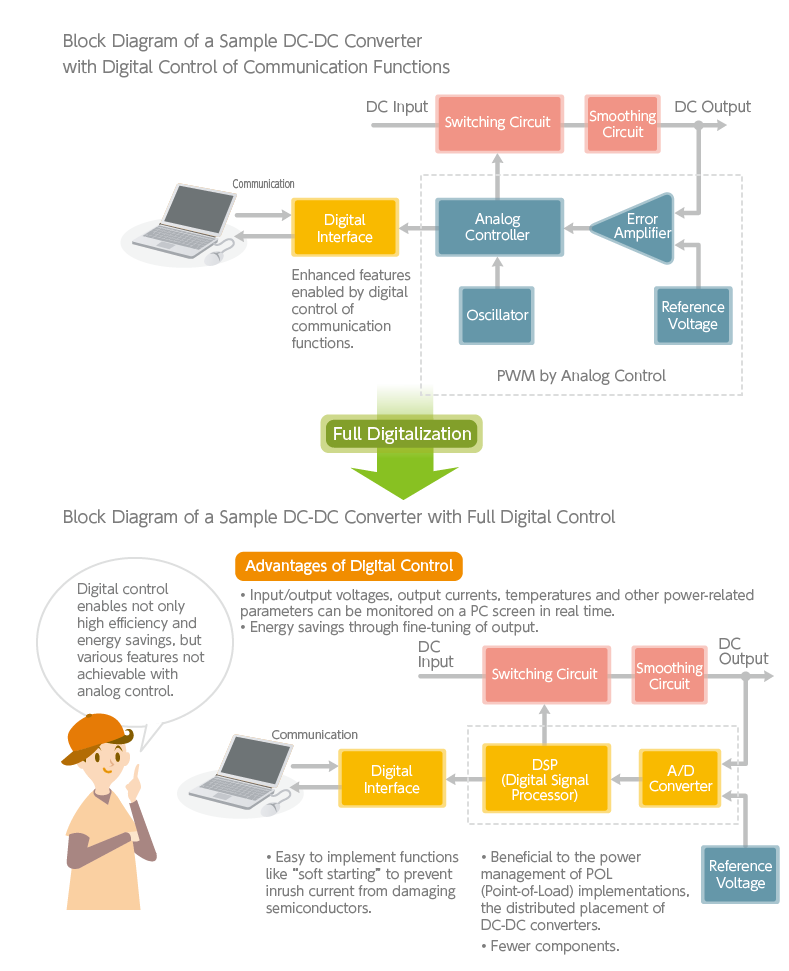
TDK is a comprehensive electronic components manufacturer leading the world in magnetic technology



